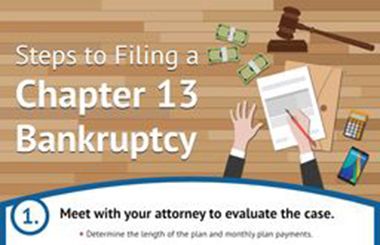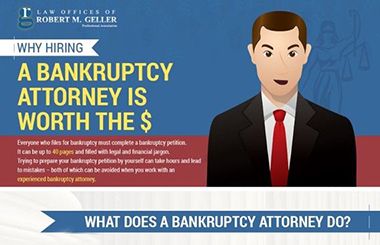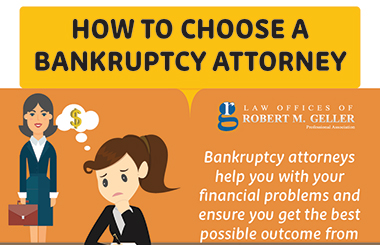 Timeline for Filing Bankruptcy
Timeline for Filing Bankruptcy
Bankruptcy is not something anyone plans to do in his or her life, but once you’ve filed, looking back might allow you to see the path you were headed down for some time.
Rarely does anyone have a single event cause them to file for bankruptcy immediately. Bankruptcy is usually the accumulation of debts over the course of time, even if debt is related to a single event, such as a medical emergency.
Understanding the timeline that leads to bankruptcy can help you get a better handle on the situation and recognize what led you to filing. Knowing what lies ahead can also make it easier to deal with bankruptcy and take advantage of the opportunities filing provides.
What do you need to know about the usual bankruptcy timeline?
Up to 10 Years Before You File Bankruptcy
Chances are you aren’t thinking about filing for bankruptcy in the next 10 years if your financial situation seems relatively unthreatening now. However, if you do end up filing, you might look back five, six, or seven years or more in the past and realize there were clues bankruptcy was on the horizon.
Bankruptcy trustees know this too. They look back into your past financial situation to make sure there were no issues with asset transfers. Most go back about two to three years, but depending on your financial circumstances it might be more.
Things are a bit more complicated if you’ve filed for bankruptcy in the last decade or so. If looking back means seeing a previous bankruptcy, it could have a significant impact on your current ability to file. Depending on the type of bankruptcy you are currently considering, you could be forced to wait as long as 8 years to file.
For more information on filing for bankruptcy more than once, check out this information from NOLO.com.
The Year Before You File Bankruptcy
The year leading up to filing is likely to get the highest level of scrutiny from your bankruptcy trustee. As stated above, trustees can go back much further into your financial history, but most are concerned with what you’ve been doing the last 12 months.
Anything you’ve done in the last year before filing that could look like you were trying to hide or transfer assets to prevent the bankruptcy court from gaining access to the asset can get you into trouble.
You and your bankruptcy attorney should carefully review the last year (or two!) of your financial life and determine the best time for you to file for bankruptcy.
Three Months Before You File Bankruptcy
There are a number of factors the court takes into consideration and many of these involve what you’ve been doing the last 90 days before filing.
For instance, you’ll need to have residency in the state where you file for bankruptcy, which often means living in the state for at least three months. Not living in one location for three months doesn’t mean you can’t file, but it can affect where you are eligible to file and what rules you’ll be forced to follow.
It’s also important that you not pay back any of your debts within 90 days before filing. Your bankruptcy trustee gains control of this window of time once you file and it’s up to them to determine what debts are priorities.
It’s also important that you not incur any new debt during this time, other than for necessities.
The Month You File Bankruptcy
Immediately after filing for bankruptcy, the automatic stay will be enacted and creditors will no longer be able to pursue collection efforts against you. You’ll receive notification from the court about any important upcoming dates, including your Meeting of Creditors, which typically takes place about three to six weeks after you file. The creditors will then have 30 days after the meeting to file any objections.
You’ll also need to clarify for the bankruptcy court what assets you intend to keep or reaffirm within the first 30 days after filing.
Meeting the deadlines during this time is an essential part of protecting your assets in bankruptcy, so it’s important to work closely with an attorney who understands the bankruptcy timeline.
90 Days after You File Bankruptcy and Onward
At this point, the bankruptcy court assumes most control of the process and your responsibility is to ensure you stay on track with future financial plans. This means meeting your Chapter 13 repayment obligations or focusing on rebuilding your credit in Chapter 7.
Your attorney will go over a detailed timeline with you that takes into consideration your specific circumstances and needs.
To learn more about bankruptcy or to speak to someone about what you can expect in the years, months, and weeks surrounding your bankruptcy, contact the Law Office of Robert M. Geller at 813.254.5696 to schedule a consultation.







 Timeline for Filing Bankruptcy
Timeline for Filing Bankruptcy



















![Signs That You May Need to File Bankruptcy [Infographic]](https://djml3wkzi26ea.cloudfront.net/wp-content/uploads/2021/01/signs-chap7-v-chap13.jpg)
![How To File for Bankruptcy [Infographic]](https://djml3wkzi26ea.cloudfront.net/wp-content/uploads/2020/07/bankruptcy-steps-infographic-web.jpg)










